
Greetings to all pool owners in Long Island. As pool service experts with years of experience, we can’t stress enough the pivotal role that winterization plays in the longevity and functionality of your above-ground pool skimmer.
The skimmer, for those who might not be entirely familiar, is akin to the unsung hero of your pool. Day in and day out, it diligently works to remove debris from the water’s surface, ensuring your pool remains sparkling and clean.
However, as the winter months approach, these same skimmers become highly vulnerable.
Without proper winterization, your skimmer is at an increased risk of facing irreparable damage. The frigid temperatures of the cold winter months can lead to water inside the skimmer freezing and expanding.
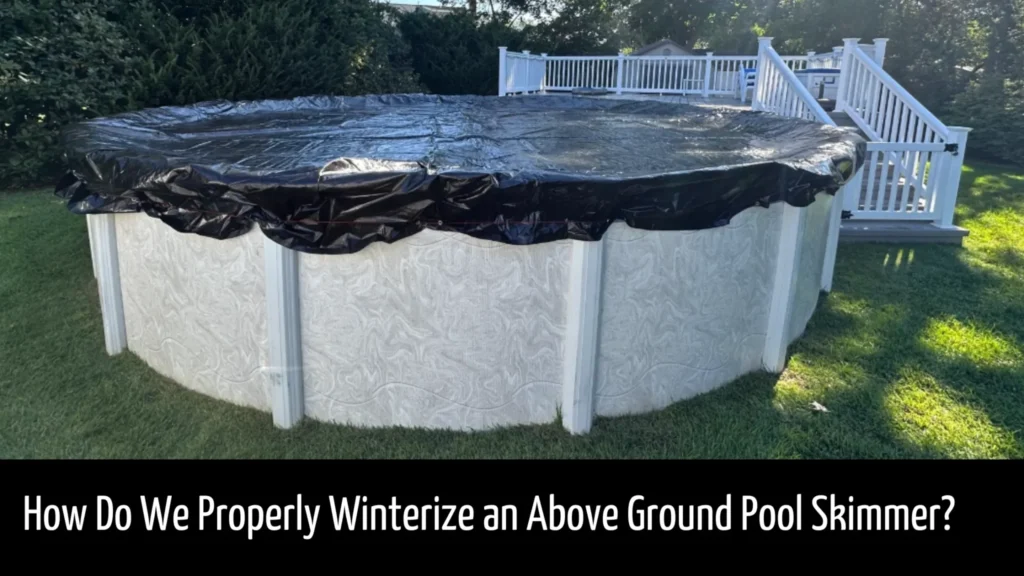
This not only damages the skimmer itself but can also cause cracks and breakages to the pool’s plumbing system. This damage often results in costly repairs and unnecessary downtime come spring.
The good news? With the proper knowledge and a few preventative steps, these issues can be entirely avoidable.
Let’s dive deeper into why it’s crucial to winterize your above-ground pool skimmer and how doing so can save you both money and peace of mind.
The pool skimmer, in particular, is a cornerstone in maintaining the pristine condition of your swimming pool.
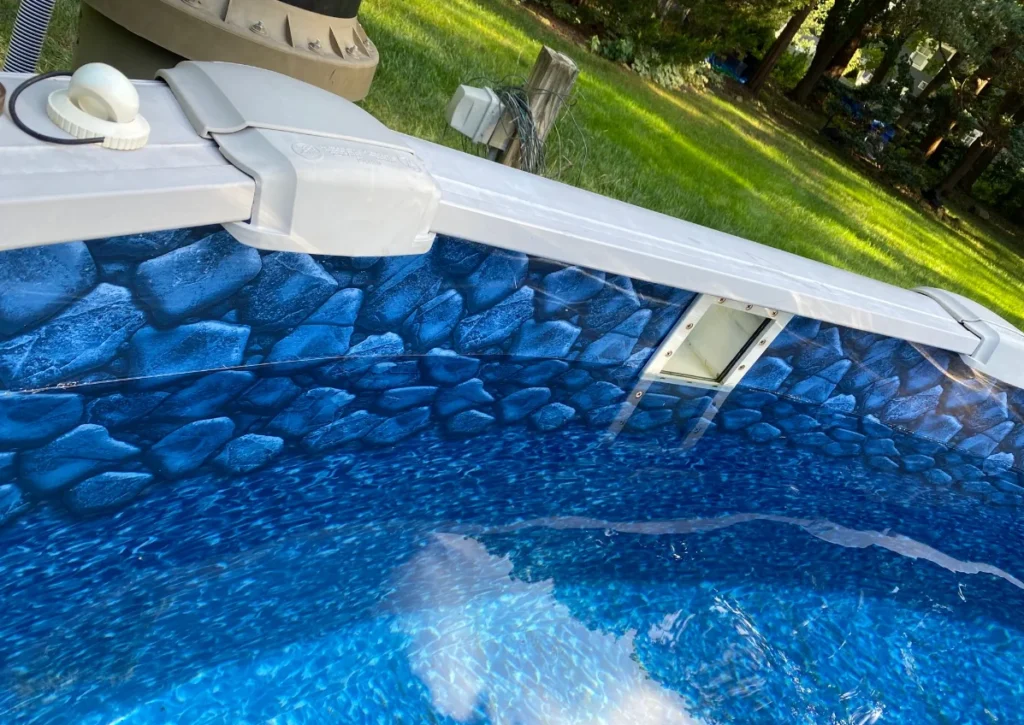
At its core, the pool skimmer is ingeniously designed to remove floating debris, such as leaves, grass, and even the occasional stray insect, before they sink and become harder to extract.
Think of it as the first line of defense against a murky pool; it ensures that your pool water remains clear and inviting, reducing the strain on your pool filter and ensuring efficient circulation of pool chemicals.
However, as we transition into colder months, this very asset presents a unique vulnerability. The skimmer is partially exposed to the elements, being at the pool’s perimeter.
This makes it a prime target for the cold. When trapped water inside the skimmer or its lines freezes, it expands.
This expansion can cause the skimmer to crack or, worse, damage the connected plumbing.
For an element so crucial, it’s easy to see why its vulnerability during winter is a pressing concern for many pool owners.
By understanding the pivotal role and vulnerabilities of the skimmer, we’re better equipped to ensure its protection and longevity, especially during the unforgiving winter months.
The pool skimmer, in particular, is a cornerstone in maintaining the pristine condition of your swimming pool.
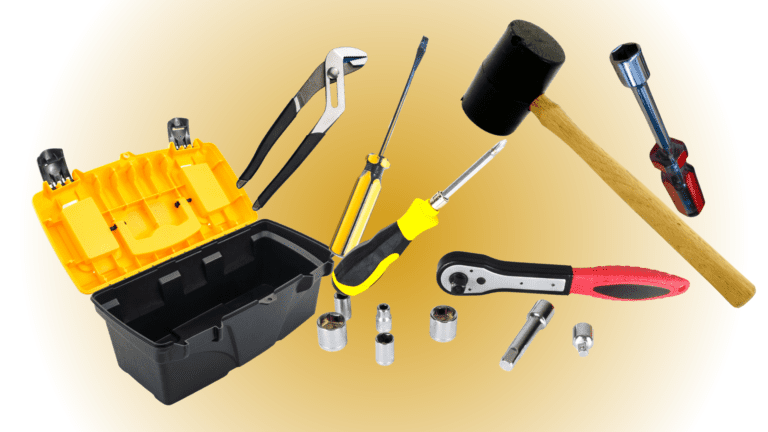
When it comes to winterizing your pool skimmer, this sentiment couldn’t be more accurate.
Ensuring you have the correct supplies on hand not only makes the process smoother but also guarantees a level of protection that can stand up to Long Island’s harshest winter days.
Here’s a curated list of essential tools and materials gathered from our years of experience in the pool service industry:
Skimmer Plugs and Winterizing Plates: These are specifically designed to securely seal off your skimmer from the rest of the pool. By doing so, they prevent water from getting in, which, if frozen, could lead to potential cracks and damages.
Pool Antifreeze: Contrary to what some might believe, not all antifreeze solutions are created equal. Pool antifreeze is a non-toxic solution tailored for your pool’s plumbing lines. It helps ensure that any residual water inside doesn’t freeze and expand.
Gizzmo: A device ingeniously designed for skimmer protection. Made of sturdy material, the Gizzmo absorbs the pressure and expansion caused by freezing water, thereby safeguarding your skimmer.
Pool Cover: Beyond just the skimmer, it’s crucial to protect the entire pool. A high-quality winter cover shields your pool from debris, snow, and ice formations. Additionally, it can help alleviate pressure on the skimmer during heavy snowfalls.
Investing in quality tools and materials not only ensures better protection for your skimmer but also grants you peace of mind, knowing your pool is primed to withstand the winter season.
Having established the importance of the skimmer and equipped ourselves with the right tools, we now move to the very heart of the matter: the winterization process itself.
Over our years of service in Long Island’s pool industry, we’ve seen firsthand how meticulous preparation can pay dividends in the long run.
So, let’s dive into the steps of the winterization process.
Before we can set about protecting the skimmer from winter’s wrath, we must ensure it’s in the best possible condition. This begins with a thorough cleaning:
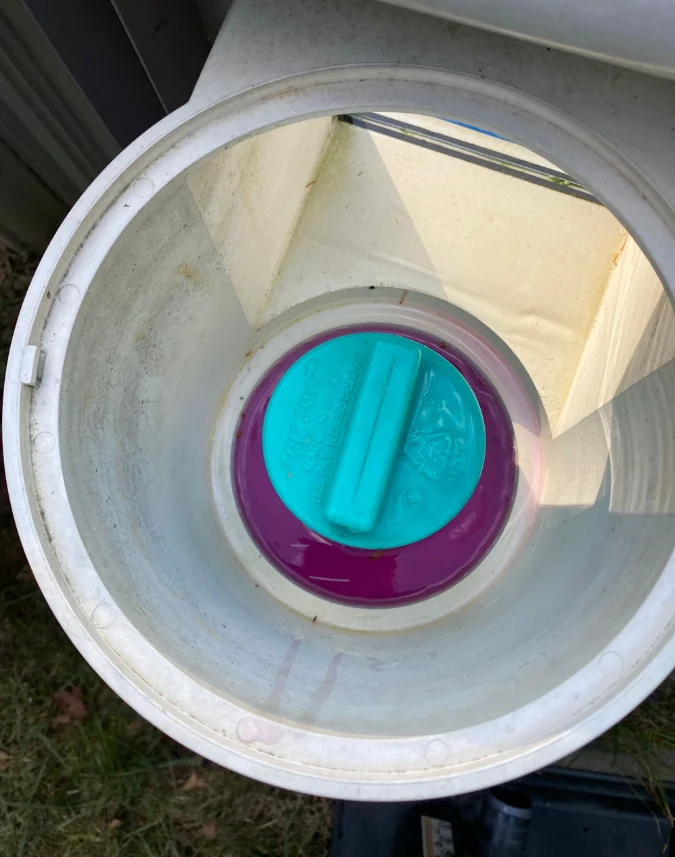
Cleaning might seem like an essential step, but it sets the tone for the rest of the winterization process. A clean and inspected skimmer not only functions optimally but is also better positioned to weather the winter months without incident.
One of the most overlooked aspects in the winterization process, yet one of the most crucial, is adjusting your pool’s water level. Based on our experiences and learnings from countless winters on Long Island, ensuring the correct water level can make a world of difference. Let’s explore why and how:
When you think of freezing water, imagine it as an expanding entity.
If the water level in your pool remains high, touching or surpassing the skimmer’s mouth, the chances of this expanding frozen water damaging the skimmer or the surrounding area increase manifold.
By lowering the water level below the skimmer, you provide a buffer zone. This step alone can save a significant amount of potential winter damage.
While the advice to lower water is generally sound, there are certain cases where it might not be the best course of action.
For instance, in pools with vinyl liners, lowering water excessively can cause the liner to pull away or shrink, leading to potential damage.
Also, if you have a solid tarp pool cover that is just the right size for your pool, the pool cover won’t fit the pool properly if the water level in the pool is too low. The cover will become too small and be prone to tearing from the weight of snow or rain.
Similarly, if your backyard has a high water table or is prone to flooding, drastically reducing pool water could lead to the pool “floating” or becoming dislodged from its position. Such nuances emphasize the importance of personalized guidance.
So, what is the sweet spot?
Typically, for above-ground pools, lowering the water level about 1-2 inches below the skimmer mouth works well for pools with solid tarp covers.
Since the pool is covered with a solid tarp, it can’t overflow from rain and snowfall.
If your pool is covered with a mesh cover that allows water to flow through it, then 3-6 inches below the skimmer is more suitable, since the pool will gain water over the offseason.
However, this can vary based on your specific pool type, surrounding environment, and the expected severity of the winter.
Using a submersible pump can help achieve the desired water level with precision.
Navigating through the intricate nuances of pool maintenance, one might come across a term that, on the surface, might seem counterintuitive – pool antifreeze.
While standard antifreeze solutions are widely recognized for vehicles, the concept might seem foreign in the context of our swimming pool.
Unlike the antifreeze used in automobiles, pool antifreeze is specially formulated to be non-toxic and safe for your pool environment. The primary reason for its use stems from a basic scientific principle: water expands when it freezes.
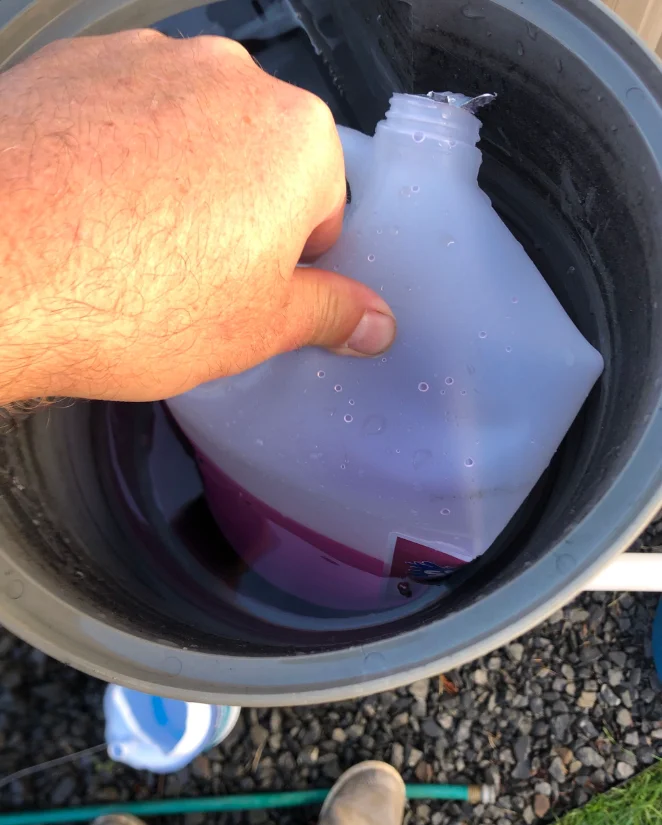
Any residual water trapped in your skimmer lines, even after diligent draining, can freeze and lead to potential cracks or damage.
Pool antifreeze acts as an insurance against this. It’s especially vital in regions like Long Island, where the winters can be particularly relentless, and the freeze-thaw cycle can jeopardize pool infrastructure.
Once you’ve determined the need for pool antifreeze, it’s essential to apply it correctly.
Start by ensuring your skimmer lines are as free of water as possible using a shop vac or a specialized pool blower.
Once drained, pour the recommended amount of pool antifreeze (as per the product’s guidelines) into the skimmer.
It’s imperative to ensure the antifreeze flows into the skimmer lines and not into the main pool.
Once done, seal the skimmer line using a plug or a Gizzmo, ensuring the antifreeze remains inside the line throughout winter.
With a relatively simple step, you can mitigate risks and set the stage for a smooth transition into the warmer months.
As always, when working with any pool chemical or additive, make sure to follow manufacturer recommendations and safety guidelines.
A pool’s skimmer is akin to a gateway, actively allowing water to flow in and out as it works to clear away debris.
However, during the winter months, this gateway becomes a potential vulnerability. This is where plugs come into the picture, providing a protective barrier against the challenges of winter.
Let’s dive deeper into this integral step of the winterization process.
Installation is more than just inserting a plug; it’s about ensuring optimal protection. For rubber plugs, ensure the skimmer line is dry and fit the plug snugly, making sure there are no gaps.
When using a Gizzmo, first apply Teflon tape around its threads to ensure a watertight seal, then screw it into the skimmer, ensuring it’s firmly in place but not overtightened, which might cause damage.
Achieving a perfect seal is paramount. Here are a few pro tips:
A pool’s defense against the frigid temperatures of winter often requires some ingenuity. One such creative solution, often discussed among pool professionals, revolves around the use of “ice compressors.”
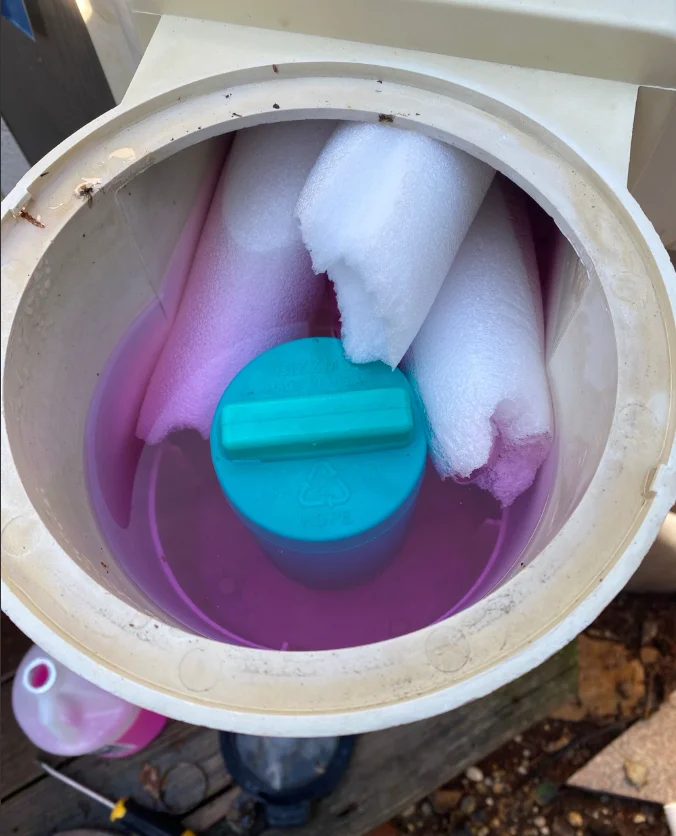
Let’s break down this lesser-known but effective tactic.
Only some pool skimmers are built the same. Sometimes, you’ll come across skimmers where, despite your best efforts, a standard Gizzmo just doesn’t fit securely. This misfit can be due to unique skimmer designs, previous modifications, or even slight warping over time.
In such cases, alternative solutions like ice compressors come to the forefront.
The primary goal is to have something that can absorb the pressure exerted by expanding ice, protecting the skimmer from potential cracks or breaks.
If a Gizzmo isn’t suitable, consider these alternatives:
Ice compressors and Gizzmos are just a part of a comprehensive winterization strategy.
Other methods include:
When the chill of winter starts to descend upon Long Island, the trusted winter cover emerges as a guardian for countless pools, shielding them from the harshest elements of the season.

This protective barrier not only safeguards the pool water but plays a pivotal role in the health of your skimmer as well.
Let’s dive into the significance of winter covers, particularly concerning skimmers.

As the winter winds howl and snow blankets Long Island, one might be tempted to think of the pool as a settled matter until spring.
However, proactive maintenance doesn’t take a winter break. The months following winterization are just as crucial as the preparation itself.
Let’s explore the importance of post-winterization checks, especially concerning the skimmer.
What to Do if Water Gets into the Skimmer During Winter?
How Often Should You Check the Skimmer During Winter?
Ideally, a bi-weekly check during the winter months should suffice under normal circumstances. These routine inspections ensure everything remains in place and help you spot potential issues early on.
Can Pool Antifreeze Harm the Pool Liner?
Pool-specific antifreeze is formulated to be non-toxic and safe for pool components, including liners, unlike automotive antifreeze, which contains toxic ethylene glycol, which is safer for both pool components and the environment.
Winterizing your pool skimmer isn’t just routine – it’s an essential step in preserving your pool’s longevity and ensuring optimal performance. Our pools are a source of joy, relaxation, and countless memories; they deserve nothing less than our utmost attention, especially during the challenging winter months in Long Island.
At Romanelli & Son Pool Service, we bring years of expertise and dedication to ensure your pool is winter-ready.
Are you considering professional winterization, or do you have more questions? Reach out to us.
We’re just a call away, always ready to help you navigate through the winter with confidence, ensuring your pool remains in peak condition for the seasons ahead.

We make pool ownership easy with stress-free maintenance, expert repairs, and cutting-edge tech. From sparkling water to pool automation, we handle every detail so you can relax and enjoy your pool.
© 2025 Paul Romanelli & Son Pool Service.